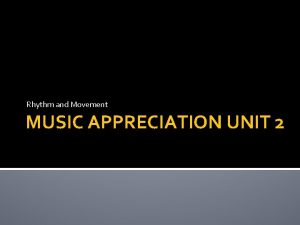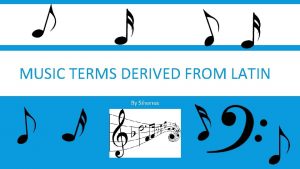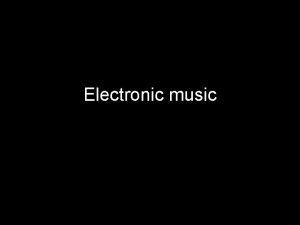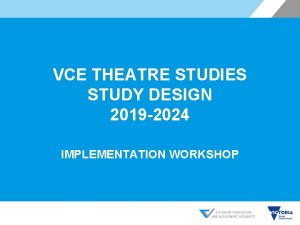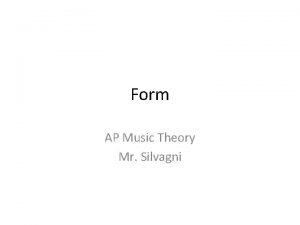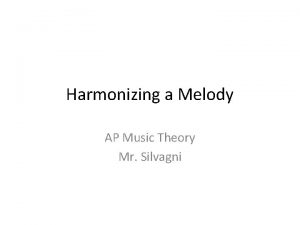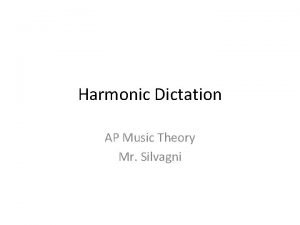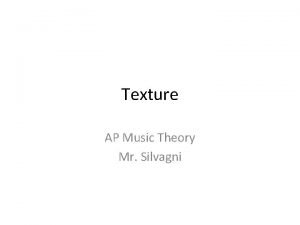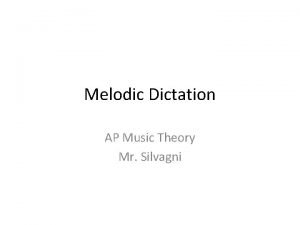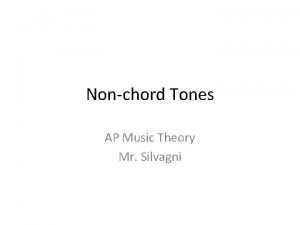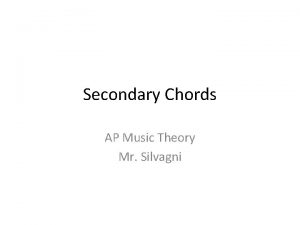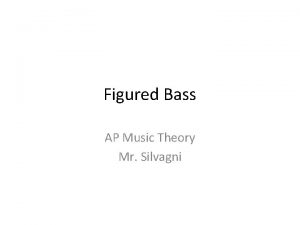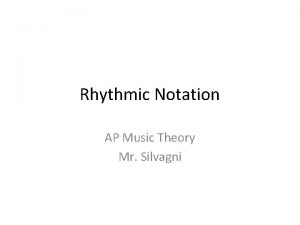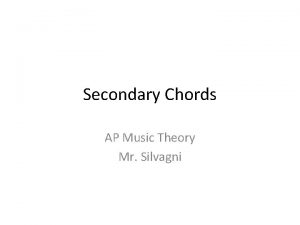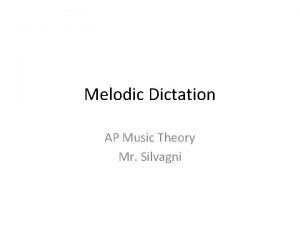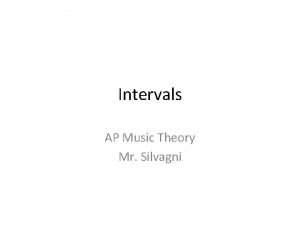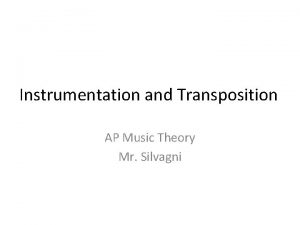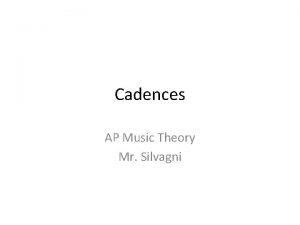Performance Terms AP Music Theory Mr Silvagni Italian
















- Slides: 16

Performance Terms AP Music Theory Mr. Silvagni

Italian heritage • Most terms in music come from Italian, though there a few in French and German • An exhaustive list of musical terms: • https: //en. wikipedia. org/wiki/List_of_Italian_musical_terms_used_in _English

Clarifying Terms • Staying the same • L’istesso tempo – at the same tempo • Sempre – Always • Simile – In the same manner • Changing slowly • Poco a poco – little by little • A small amount • Non troppo – not too much • Poco – little • Un poco – a little

Clarifying terms • A large amount • Assai – very • Molto – very • Less • Meno – less • Mezzo – half • More • Più – more • With • Con - with

Dynamics indicate the volume and or mood of a piece of music. Here they are listed from softest to loudest • ppp – pianississimo • pp – pianissimo • p – piano • mp – mezzo piano • mf – mezzo forte • f – forte • ff – fortissimo • fff - fortississimo

Other dynamic terms • Crescendo – increasing in loudness • Decrescendo – decreasing in loudness • Diminuendo – decreasing in loudness • fp – fortepiano – forte immediately followed by piano • rf or rfz – rinforzando – a sudden increase in loudness

Tempo refers to the speed of music Initial markings are in Italian and may be followed by a metronome marking, e. g. M. M. = 120 (Maelzel Metronome), referring to beats per minute The metronome marking will also refer to which note is played at the listed speed, e. g. quarter note = 120

Italian Tempo Terms • Fast tempo • • Prestissimo – very quick Presto – quick Vivace – fast and lively; vivacious Allegro – quick; lively; bright; merry • Medium tempo • • Allegretto – moderately quick, but not as fast as allegro Andantino – a little quicker than andante Andante – moderately slow Moderato – restrained or moderate • Slow tempo • • • Adagio – at east, slow Adagio assai – very slow Largo – broad; very slow; dignified Larghetto – slower than largo Lento – slow Grave – slow and solemn

Other tempo terms • Speeding up • Accelerando – to increase the tempo gradually • Stringendo – to press forward • Slowing down • Rallentando – to slow down gradually • Ritardanto – to slow down gradually • Ritenuto – to slow down suddenly • Other tempo changes • Rubato – to take out of the stated tempo

Articuations Articulations mark how to play a note or phrase music. It may involve the attack, release, or the entire envelope of created sound. • fz – forzando – forced; played with a sudden accent • sf or sfz – sforzato – played with sudden emphasis • fzp – forzando piano – played with a sudden accent and immediately becoming piano



Style markings identify the mood or expression used to play a part or whole piece of music • Amoroso – tender and affectionate • Animato – animated, lively • Calando – gradually softer and slower • Cantabile – in a singing style • Con anima – with life and animation • Con brio – with vigor and spirit • Con dolore – with sadness • Con forza – with force • Con fuoco – with fire, in a fiery manner • Con moto – with motion • Deciso – decisively • Détaché – detached • Dolce - sweetly

• • • • • Style markings contd. Doloroso – sorrowfully Espressivo – expressively Furioso – furious Giocoso – humorous Grandioso – with grandeur Grazioso – gracefully Legato – smooth and connected Leggiero – lightly Maestoso – majestically Marcato – marked and stressed Marzial – in the style of a march Morendo – dying away Pesante – heavy Religioso – solemn, religious Semplice – simple Sostenuto – sustained Soto voce – in an undertone Staccato – short and detached Tranquillo - tranquil

Additional Playing Indications • • • • Arco – played with a bow Arpeggio – notes of a chord played in a sequence Caesura or cesura – complete break in sound/grand pause (railroad tracks) Con sordino/senza sordino – play with mute/play without mute D. C. al Coda – go back to the start and play until you reach To Coda – then jump to the coda D. S. al Coda – go back to the sign and play until you reach To Coda – then jump to the coda D. C. al Fine – go back to the start and play until you reach Fine D. S. al Segno – go back to the sign and play until you reach Fine Grace note – miniature note played quickly before another note Octave sign (8 va or 8 vb) – signal to play notes octave higher or lower Mordent – ornament indicating first 3 notes of a downward trill (G F G) Pedal line – Ped. ______^ - guide pianist or vibraphonist to use sustain pedal Pizzicato – played by plucking Tremolo – rapid repetition of the same note (roll) Trill – ornament where two notes a second apart are alternated rapidly Turn – ornament where you play one above and below written note (D C B C)

Additional terms • Alberti bass – accompaniment pattern using a three note chord broken typically as root-fifth-third-fifth • Cadenza – solo section, typically out of time, to show off • Opus – work number • Tre corde – release left piano pedal • Una corda – press left piano pedal • Vibrato – fluctuation of pitch
 Music music music
Music music music Symbole tempo
Symbole tempo Italian terms of tempo
Italian terms of tempo Like terms and unlike terms in polynomials
Like terms and unlike terms in polynomials Combine like terms
Combine like terms Grave musical term
Grave musical term Romantic instruments
Romantic instruments Loudness or quietness of music
Loudness or quietness of music Music that employs electronic music
Music that employs electronic music Ilocos folk songs
Ilocos folk songs Music performance vce
Music performance vce Theatre studies study design
Theatre studies study design Music performance research
Music performance research Chapter 11 performance appraisal - (pdf)
Chapter 11 performance appraisal - (pdf) Behaviorally anchored rating scale
Behaviorally anchored rating scale All performance attributes designated as joint performance
All performance attributes designated as joint performance What is grounded theory in simple terms
What is grounded theory in simple terms


